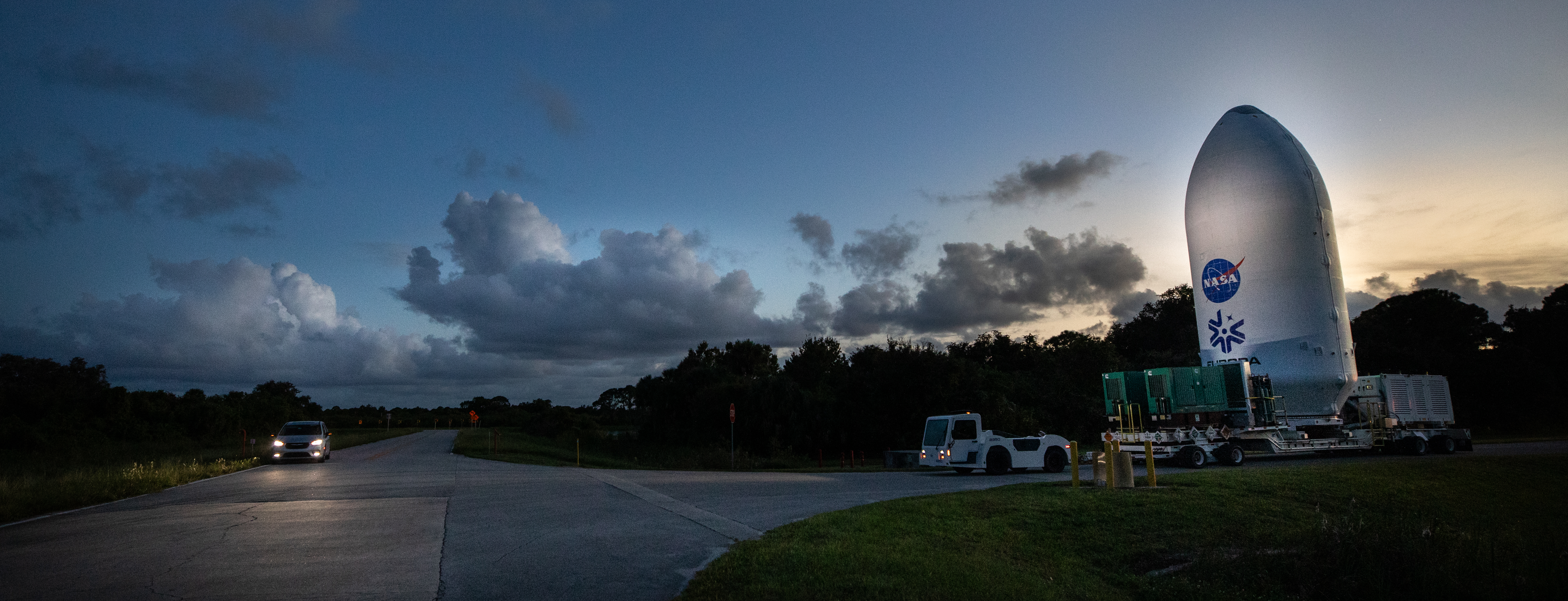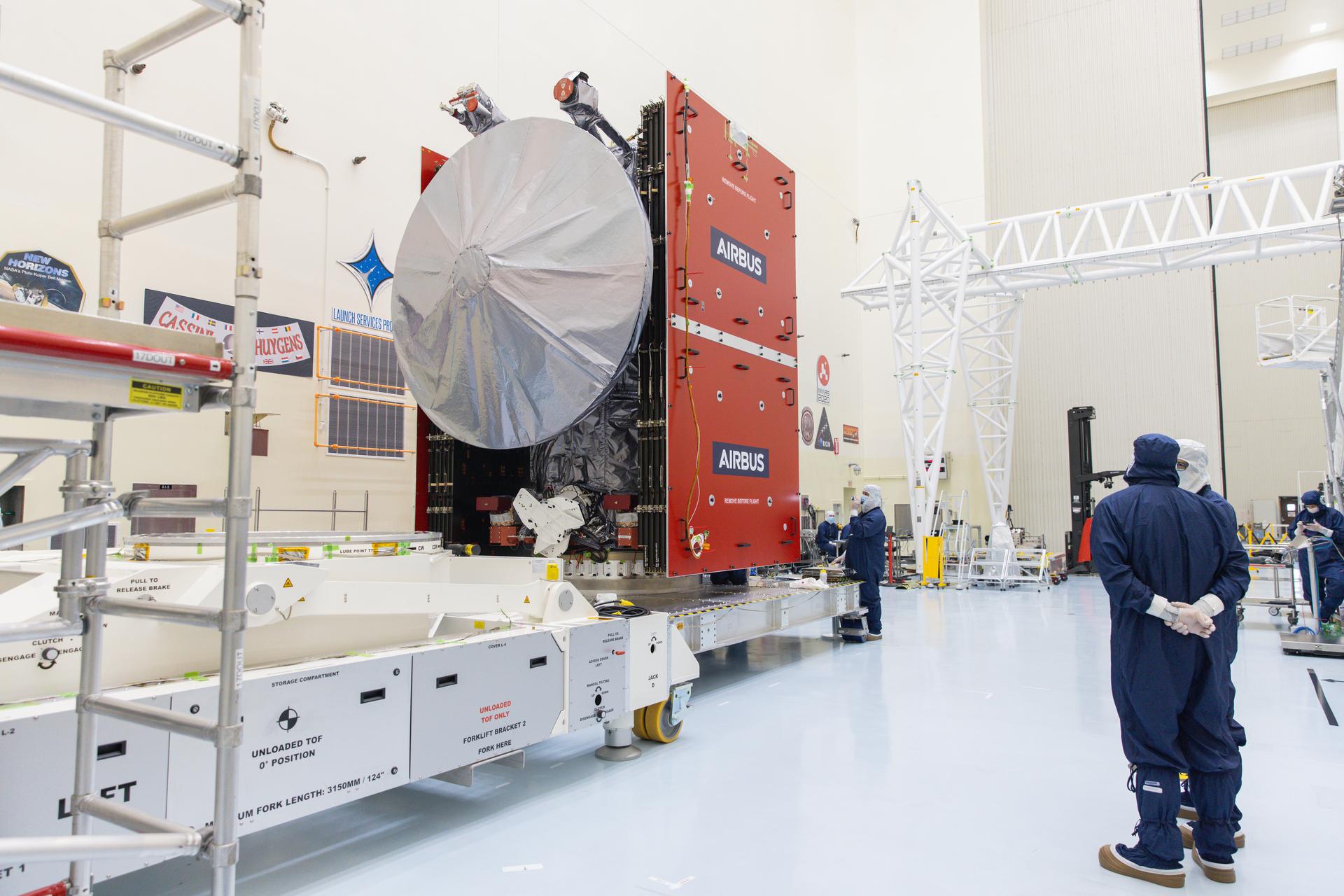
NASA and SpaceX are now targeting no earlier than Monday, Oct. 14, for the launch of Europa Clipper. Following Hurricane Milton, teams are continuing to do checkouts to ensure flight readiness.

NASA and SpaceX are now targeting no earlier than Monday, Oct. 14, for the launch of Europa Clipper. Following Hurricane Milton, teams are continuing to do checkouts to ensure flight readiness.
NASA’s Kennedy Space Center in Florida remains closed as Hurricane Milton moves off the coast.
The safety of everyone impacted by the storm remains our top priority as the agency begins the assessment and recovery process from the hurricane.
Once the winds subsided to a safe level, the center’s Ride Out Team and engineering teams began initial checkouts to ensure bridges are safe and useable. Later, a larger assessment team will thoroughly check the entire center.
The agency’s Europa Clipper launch team will schedule an official launch date when teams from NASA and SpaceX are able to perform their assessments, and confirm it’s safe to launch. Teams are working to protect launch opportunities no earlier than Sunday, Oct. 13. Clipper has launch opportunities through Wednesday, Nov. 6.
NASA will provide more information on Clipper launch opportunities as it becomes available.

Technicians completed loading propellants in the agency’s Europa Clipper spacecraft on Sunday, Sept. 22, inside the Payload Hazardous Servicing Facility at NASA’s Kennedy Space Center in Florida.
Housed in the largest spacecraft NASA has ever built for a planetary mission, Europa Clipper’s propulsion module is an aluminum cylinder 10 feet (3 meters) long and 5 feet (1.5 meters) wide, and it holds the spacecraft’s array of 24 engines and 6067.6 pounds (2,752.2 kilograms) of propellant in two propulsion tanks, as well as the spacecraft’s helium pressurant tanks. The fuel and oxidizer held by the tanks will flow to the 24 engines, creating a controlled chemical reaction to produce thrust in space during its journey to determine whether there are places below the surface of Jupiter’s icy moon, Europa, that could support life.
After launch, the spacecraft plans to fly by Mars in February 2025, then back by Earth in December 2026, using the gravity of each planet to increase its momentum. With help of these “gravity assists,” Europa Clipper will achieve the velocity needed to reach Jupiter in April 2030.
NASA is targeting launch on Thursday, Oct. 10, aboard a Space X Falcon Heavy rocket from NASA Kennedy’s historic Launch Complex 39A.
Managed by Caltech in Pasadena, California, NASA’s Jet Propulsion Laboratory in Southern California leads the development of the Europa Clipper mission in partnership with the Johns Hopkins Applied Physics Laboratory (APL) in Laurel, Maryland, for NASA’s Science Mission Directorate in Washington. The main spacecraft body was designed by APL in collaboration with NASA JPL and NASA’s Goddard Space Flight Center in Greenbelt, Maryland. The Planetary Missions Program Office at NASA’s Marshall Space Flight Center in Huntsville, Alabama, executes program management of the Europa Clipper mission. NASA’s Launch Services Program, based at Kennedy, manages the launch service for the Europa Clipper spacecraft.
To learn more about the Europa Clipper mission, visit:
https://science.nasa.gov/mission/europa-clipper
Join the conversation and get updates from these accounts:
X: @NASA, @EuropaClipper, @NASASolarSystem, @NASAJPL, @NASAKennedy, @NASA_LSP
Facebook: NASA, NASA’s Europa Clipper, NASA’s JPL, NASA’s Launch Services Program
Instagram: @NASA, @nasasolarsystem, @NASAKennedy, @NASAJPL